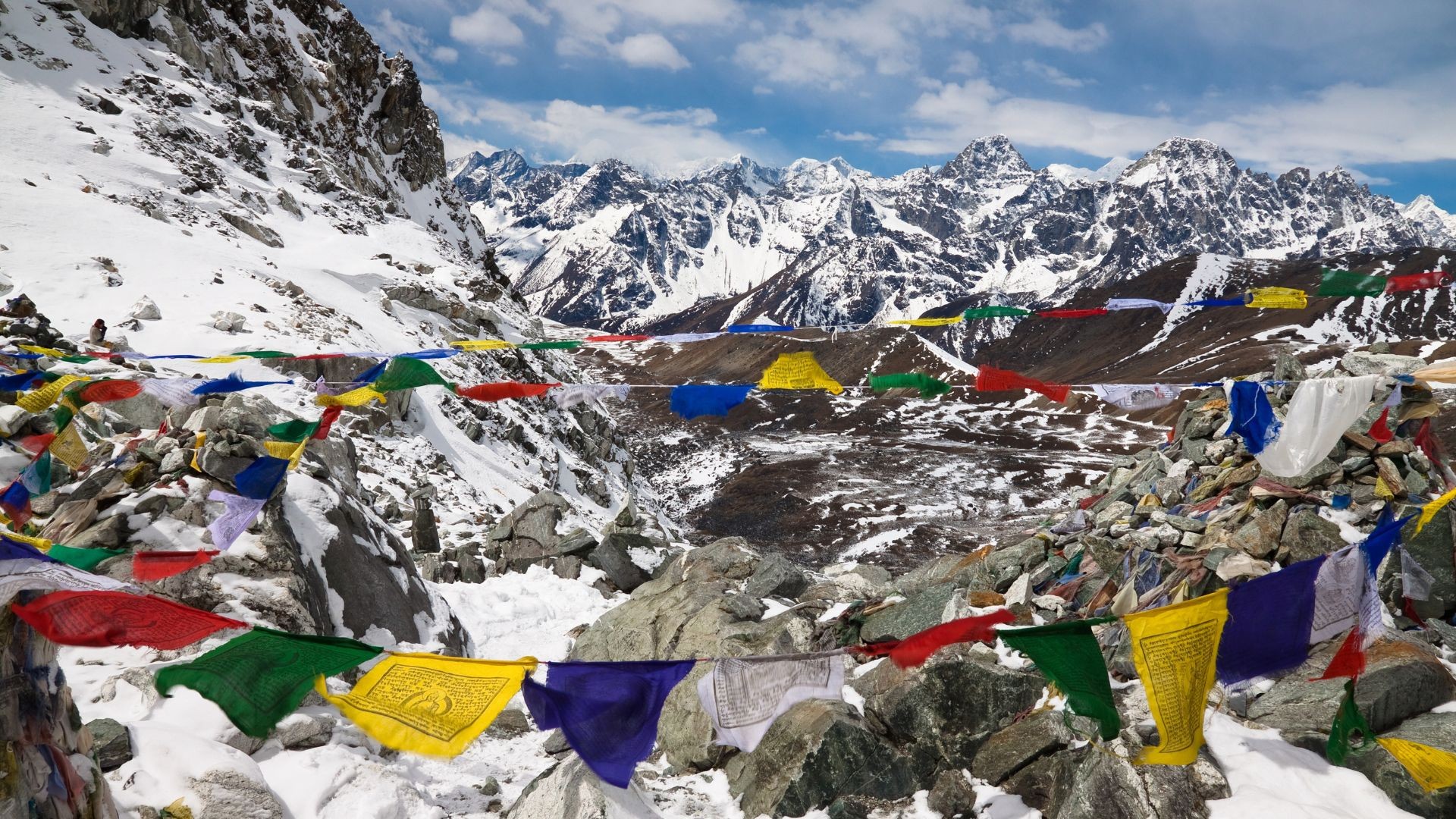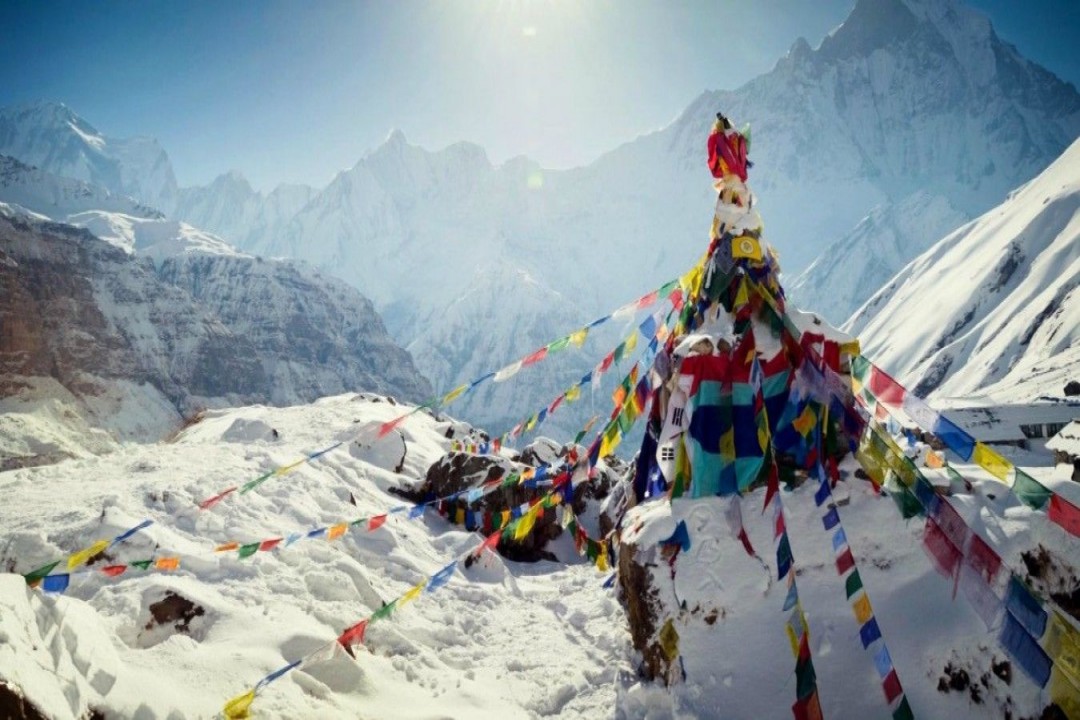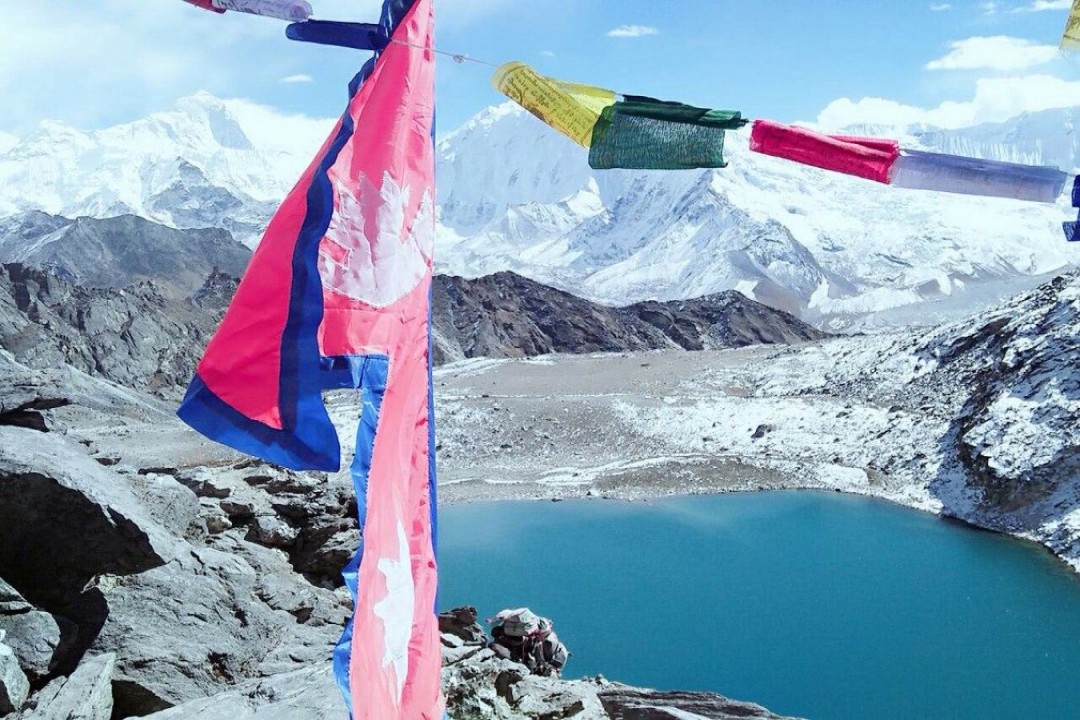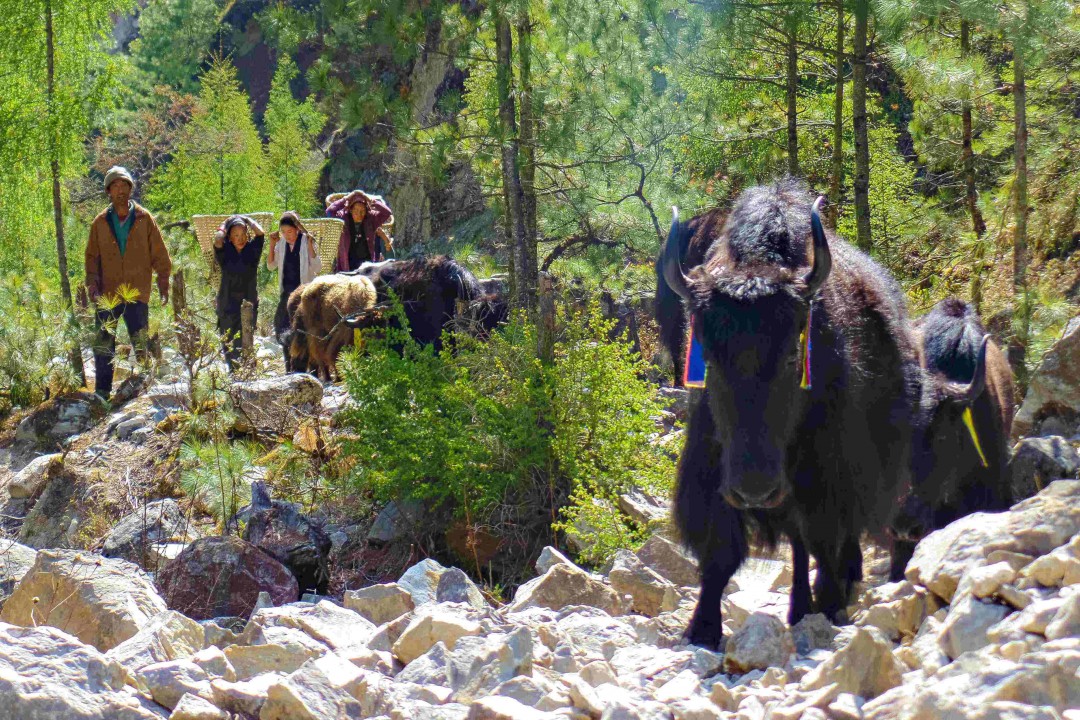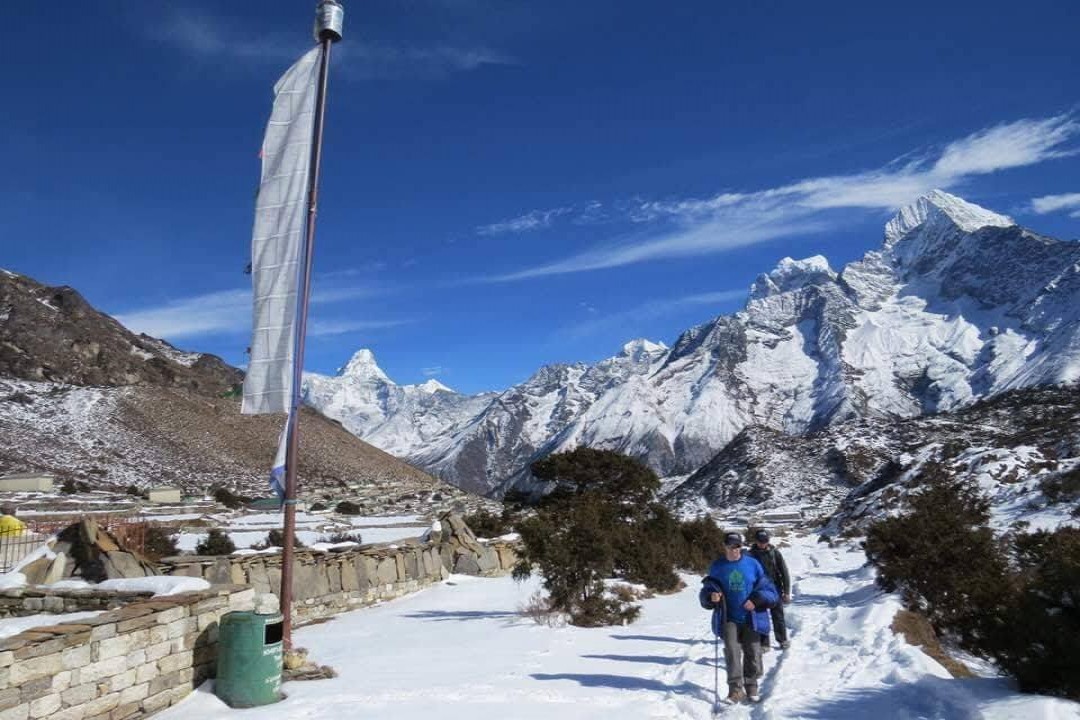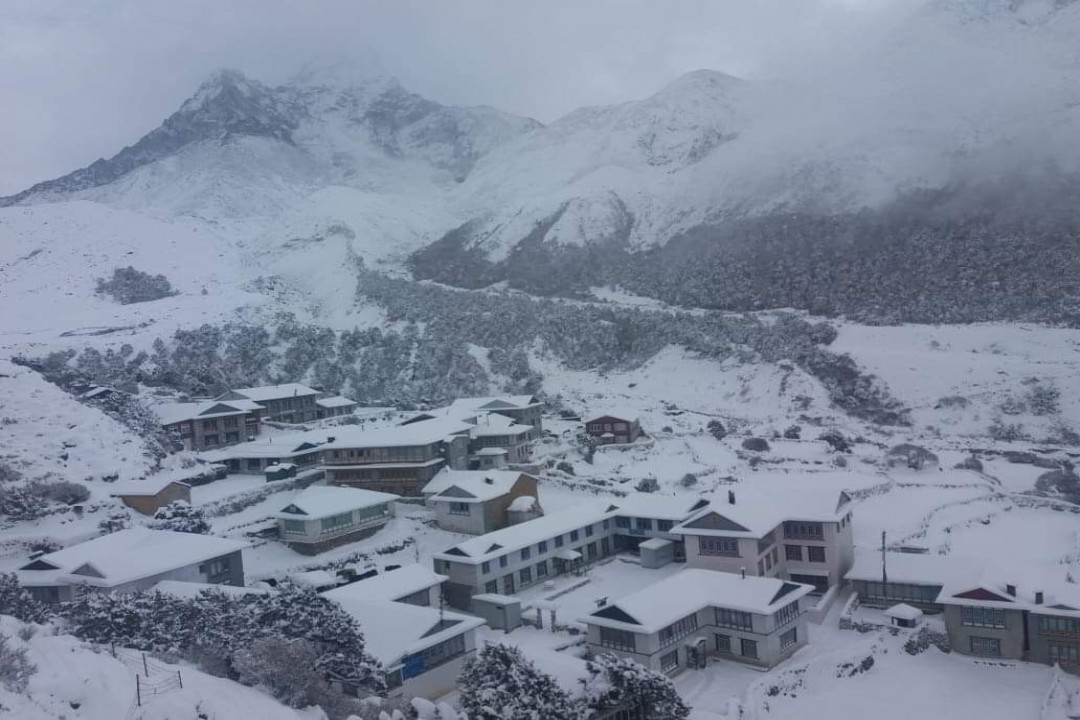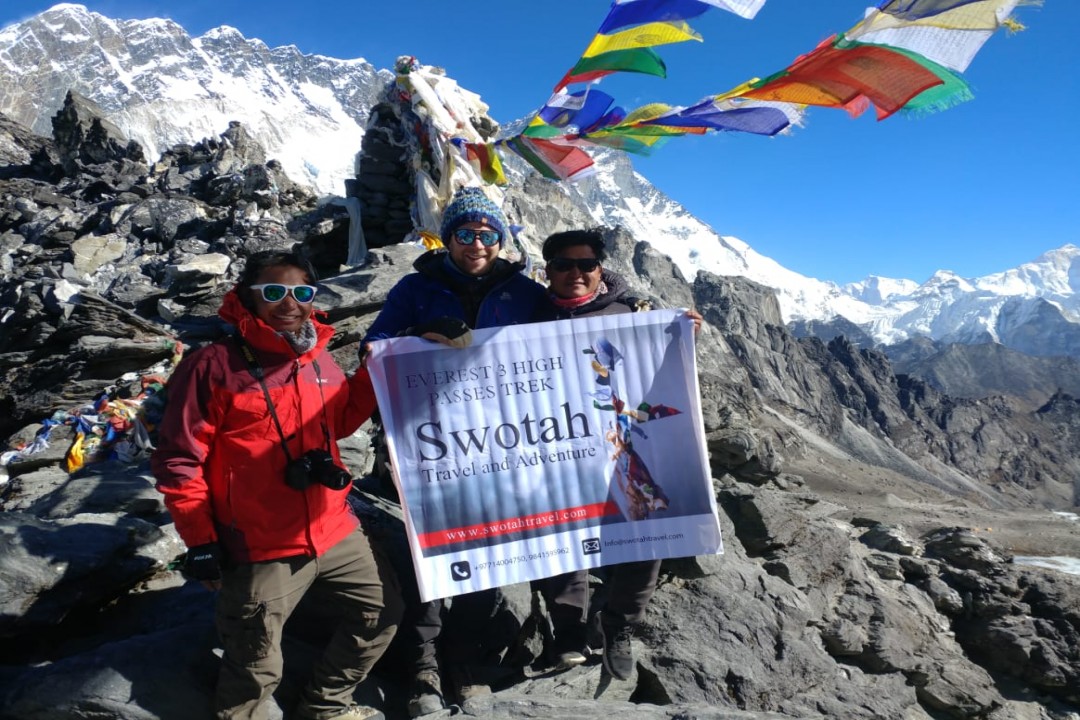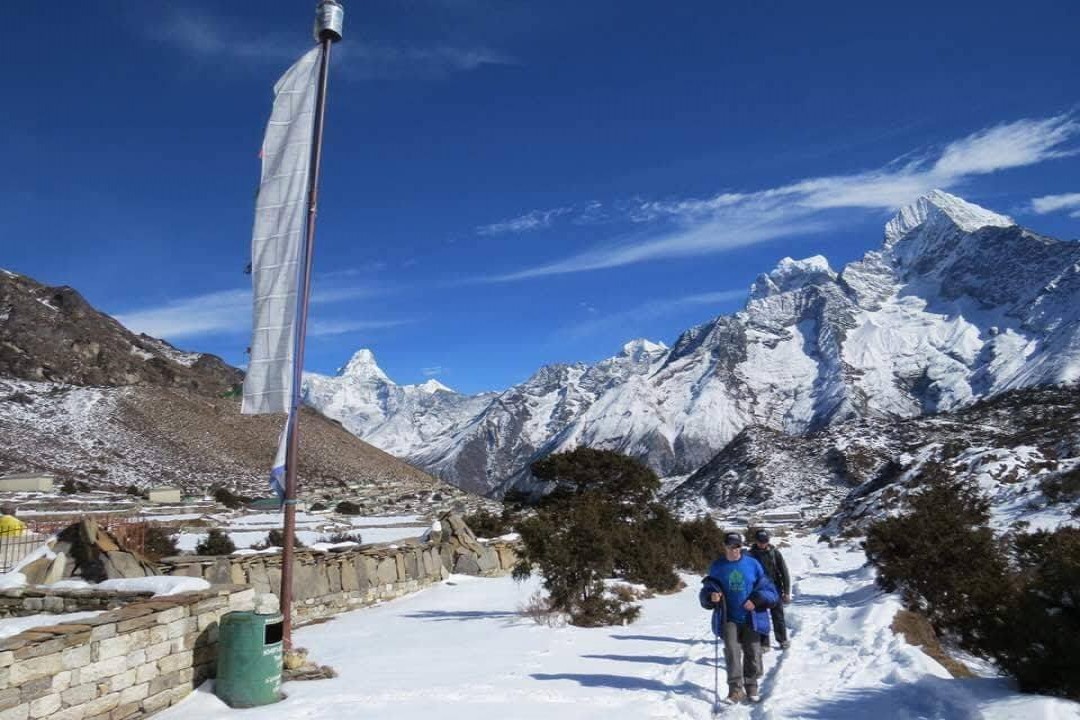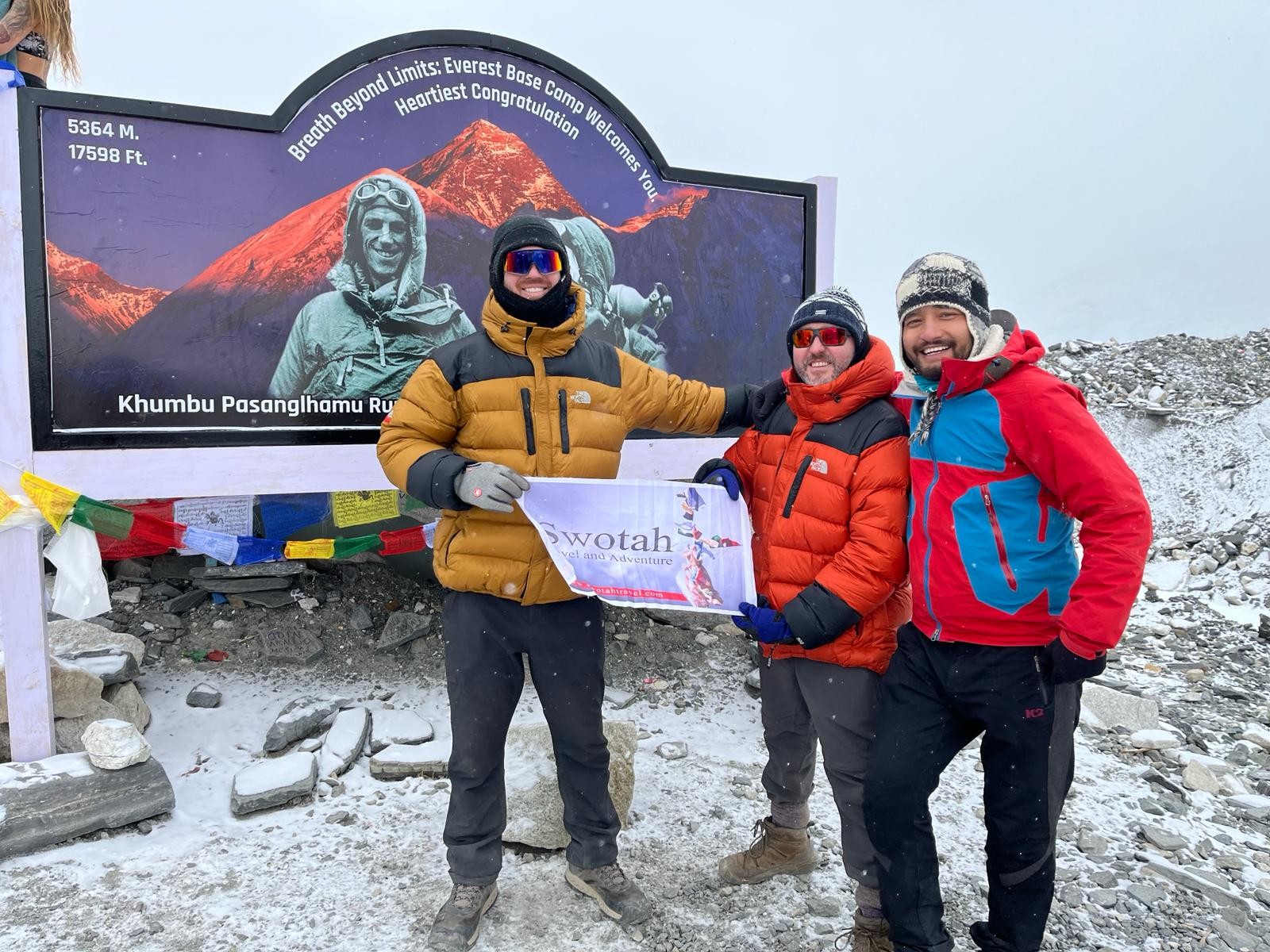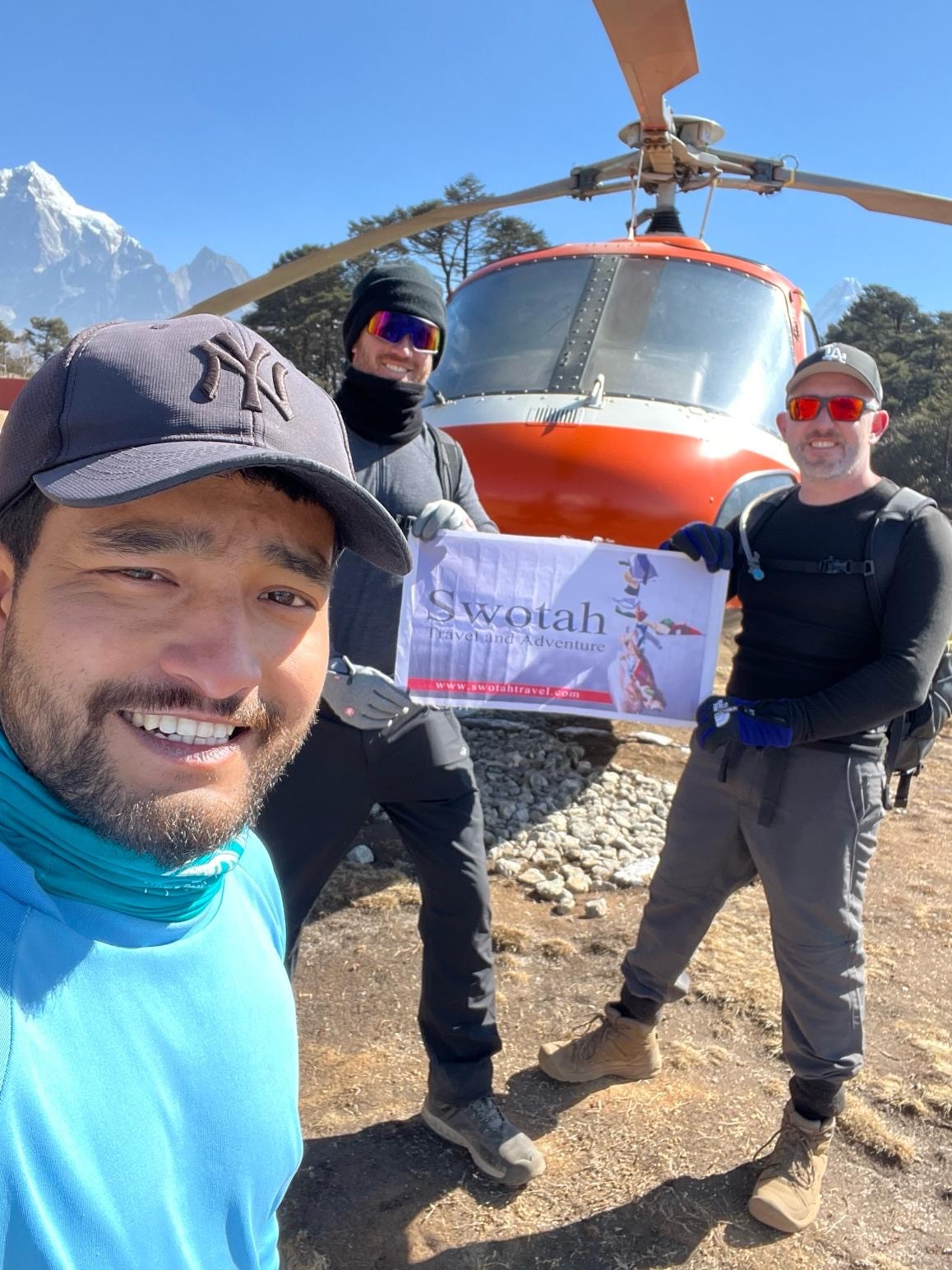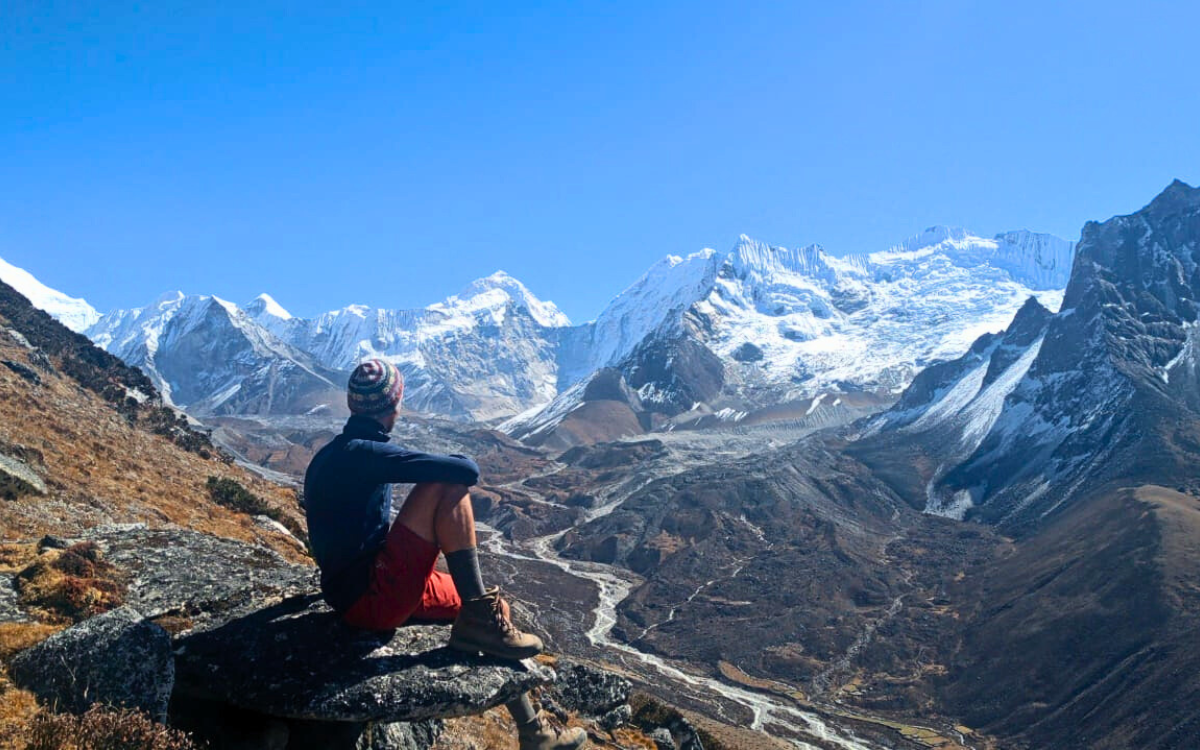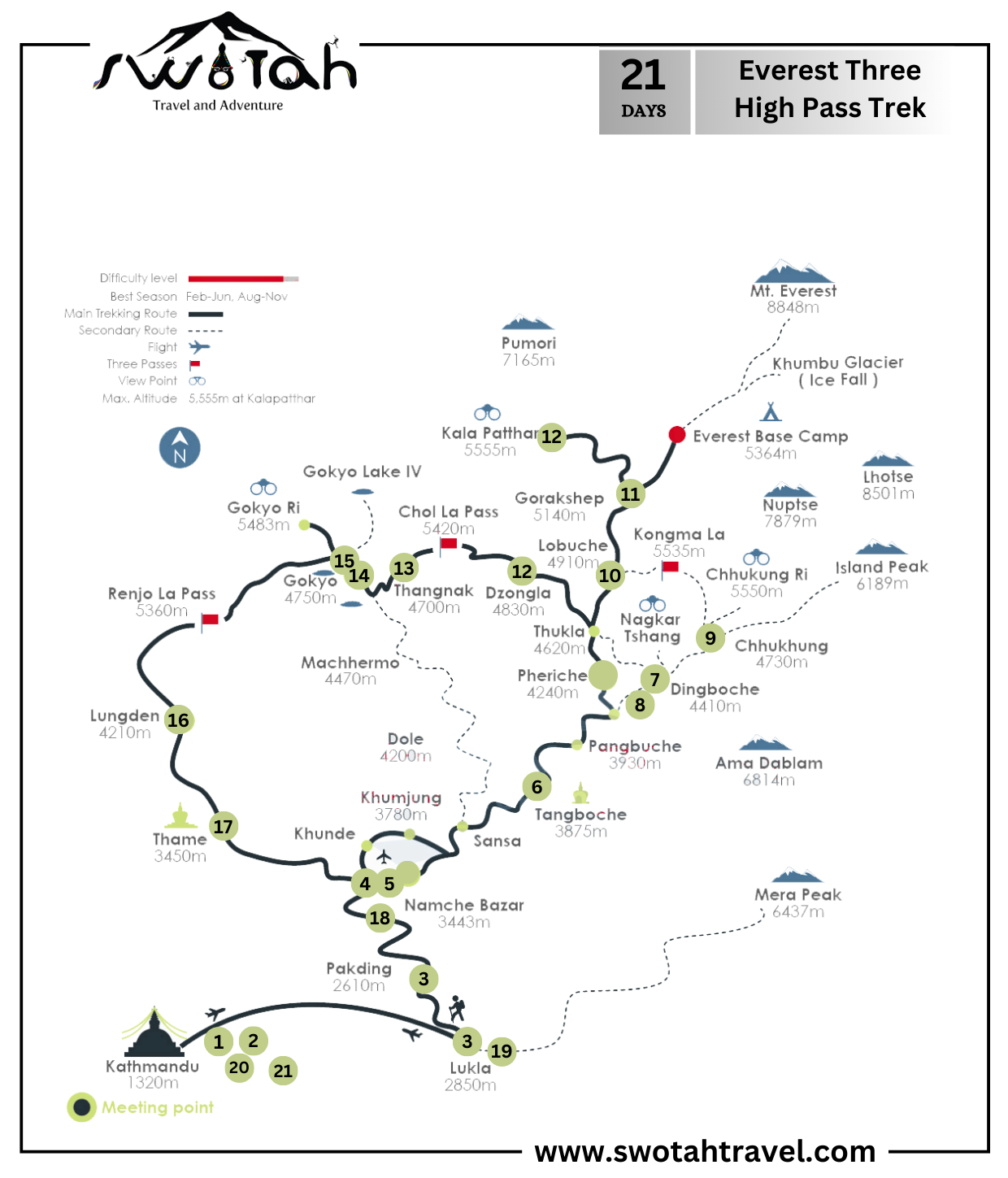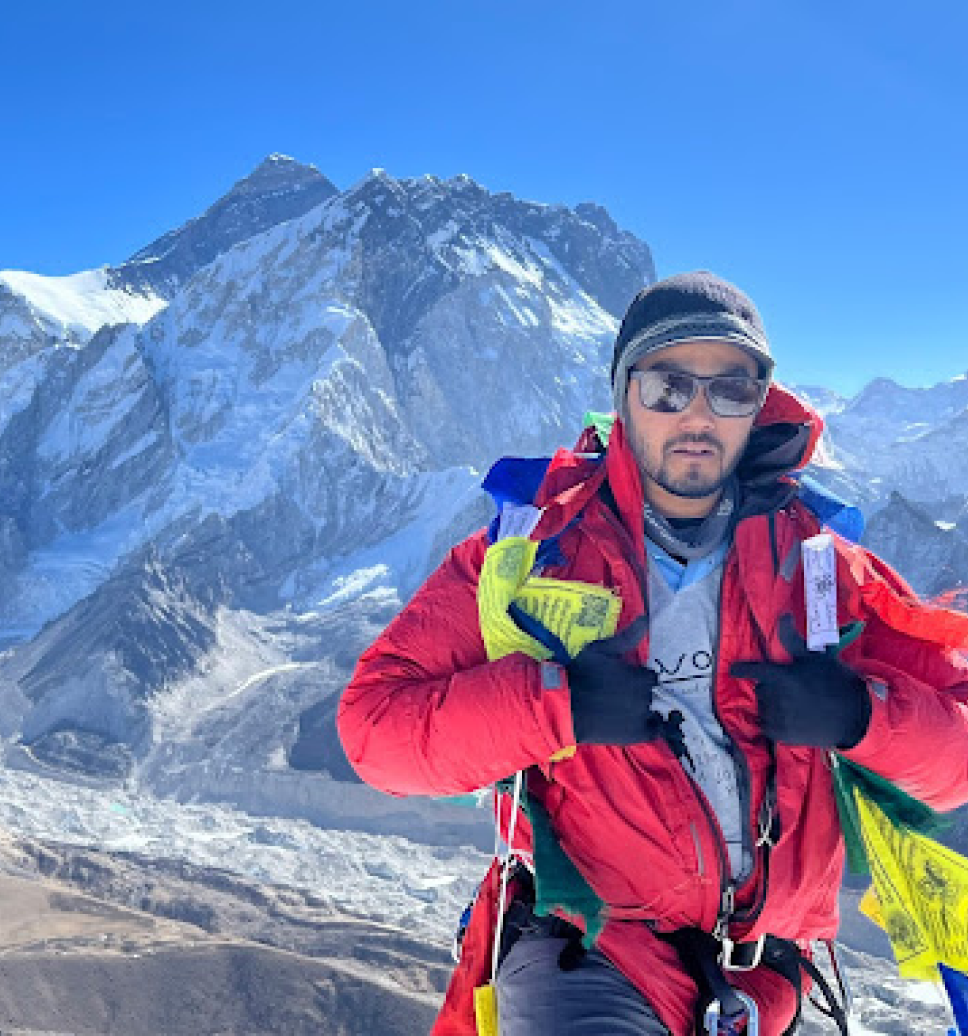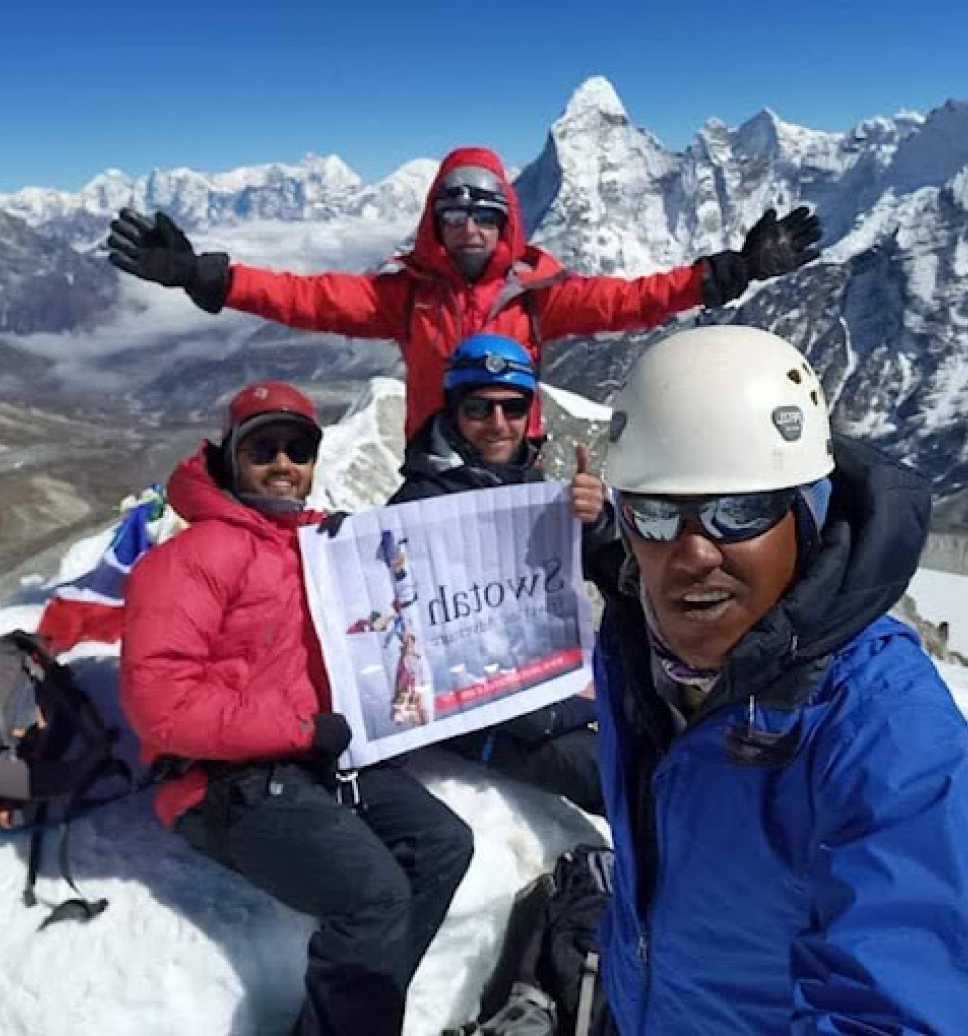GUARANTEED DEPARTURES
Check upcoming trip dates, availability & prices. If you can't see dates that suite you, contact us we will do our best to assist you.
| GUARANTEED DEPARTURES | PRICE | AVAILABILITY | |
| Mar 6, 2026 - Mar 26, 2026 | $2475 | High | |
| Mar 23, 2026 - Apr 12, 2026 | $2475 | High | |
| Apr 3, 2026 - Apr 23, 2026 | $2500 | High | |
| Apr 20, 2026 - May 10, 2026 | $2500 | High | |
| May 2, 2026 - May 21, 2026 | $2450 | High |
Trek Highlights
- Cross three cinematic high passes—Kongma La, Cho La, and Renjo La—each rising over 5,000 meters.
- Stargaze in Tengboche and Gokyo—nights you’ll forever remember and cherish.
- Trek through ever-changing landscapes and terrains, from deep forests and hidden cultural valleys to high-altitude deserts, rocky passes, and tranquil lakes.
- Get breathtaking views of Everest from Kala Patthar, Nagarjuna Hill, and Gokyo Ri.
- Immerse yourself in the sacred glacial lakes of Gokyo.
- Visit Thame, the childhood home of Tenzing Norgay.
- Traverse the longest glacier in Nepal—the Ngozumpa Glacier.
- Spot elusive wildlife such as Himalayan tahrs, lammergeiers, Himalayan pikas, and other unique animals.
- Experience warm Sherpa hospitality and savor delicious, unique local meals throughout the trek.
- Visit ancient monasteries like Tengboche Monastery, with Everest views, and explore Tibetan Buddhist traditions and sculptures.
- Soar over towering Himalayan peaks on a flight to Lukla and land on one of the world’s most thrilling runways.
- Witness 20–25 major Himalayan peaks from different angles while crossing Kongma La, Cho La, and Renjo La.
- Trek to Everest Base Camp and snap a photo on the iconic EBC rock!

No other trek in Nepal offers everything—from solitude, adventure, raw Himalayan views, and wilderness, to high-altitude challenge and deep cultural immersion—quite like the Three High Passes Trek. You’ll go beyond Everest Base Camp, connecting all the unmissable highlights such as Base Camp, Kala Patthar, Nagarjuna Hill, Gokyo Ri, and the sacred Gokyo Lakes, all in one unforgettable circuit.
Photo Gallery
Dive into our gallery to get a glimpse of the awe-inspiring vistas waiting for you on our guided treks across stunning landscapes.
Brief Itinerary
Day
1
Arrival (1,324 m / 4,344 ft)
Day
2
Kathmandu Sightseeing (1,324 m / 4,344 ft)
Day
3
Fly to Lukla and Trek to Phakding (2,610 m / 8,563 ft)
Day
4
Trek to Namche (3,440 m / 11,286 ft)
Day
5
Acclimatisation day in Namche Bazaar (3,440 m / 11,286 ft)
Day
6
Trek to Tengboche (3,867 m / 12,687 ft)
Day
7
Trek to Dingboche (4,410 m / 14,469 ft)
Day
8
Acclimatization in Dingboche (short hike to Nagarjuna Hill)
Day
9
Dingboche to Chukung (4,730 m / 15,518 ft)
Day
10
Trek to Lobuche (4,940 m / 16,207 ft) (Cross Kongma La Pass (5,535 m / 18,159 ft))
Day
11
Lobuche to Gorak Shep (5,170 m / 16,962 ft) / Visit Everest Base Camp
Day
12
Trek to Dzongla(4,830 m / 15,846 ft)/ Kala Patthar (5,545 m / 18,192 ft)
Day
13
Trek to Thagnag (4,700 m / 15,420 ft)
Day
14
Trek to Gokyo (4,790 m / 15,715 ft)
Day
15
Gokyo Exploration Day
Day
16
Trek to Lungden (4,380 m / 14,370 ft)
Day
17
Trek to Thame (3,800 m / 12,467 ft)
Day
18
Trek to Monjo (2,835 m / 9,301 ft)
Day
19
Trek to Lukla (2,860 m / 9,383 ft)
Day
20
Kathmandu
Day
21
Departure
Comprehensive Trek Guide
This Everest Three High Passes trek is an 18-day trekking adventure in the Khumbu region. You circuit through Everest Base Camp, Gokyo Valley, and the three high mountain passes: Renjo La, Cho La, and Kongma La. Major highlights include crossing glaciers, stunning lakes, experiencing Sherpa culture, and witnessing the best panoramic mountain views Nepal has to offer.
Trek Routes: Clockwise vs. Anti-Clockwise
The Everest Three Pass Trek either begins anti-clockwise/counterclockwise, or clockwise. The counter-clockwise route is the most popular, and its order is Kongma La, Cho La, and Renjo La, where the trek flows from Namche Bazaar, Tengboche, Dingboche, Chukung, Lobuche, Gokyo, Thame, and Namche. On the other hand, the clockwise route begins with Renjo La, Cho La, and Kongma La, and the trek route flows from Namche, Thame, Gokyo, Lobuche, Chhukung, Dingboche, Tengboche, and Namche.
Anti-clockwise is commonly preferred because it provides ample time to acclimatize, starting from the lower elevation with gradual elevation gains.
Swotah’s Recommended Itinerary
Swotah's 21-day Everest High Passes trek package is the classic anti-clockwise Everest Three Pass Trek. We recommend this 3-pass trek in an anti-clockwise direction as it is the safest and most effective for you. We have crafted the Everest Three High Pass trek itinerary carefully using the best altitude adaptation method and proven strategy for trekking acclimatisation. With this itinerary, all of our trekkers have successfully completed the Three Pass Trek.
Acclimatization Strategy
Our itinerary is carefully designed to help you acclimatize gradually and safely. We've included three dedicated acclimatization days-in Namche, Dingboche, and Gokyo-to support your body's adjustment to the increasing altitude and reduce the risk of altitude sickness.
Crafted by experienced local guides who have completed the Everest Three High Passes trek countless times, this route ensures you approach the most challenging sections-Everest Base Camp, Kala Patthar, and the high passes-well-prepared both physically and mentally.
Arrival in Kathmandu & Sightseeing
The 3 high passes trek begins with a warm welcome at the Tribhuvan International Airport from our Swotah Travel representative. Before the real adventure starts, you enjoy a full day of sightseeing in Kathmandu, where you explore UNESCO World Heritage Sites such as Pashupatinath Temple, Swayambhunath Stupa, Kathmandu Durbar Square, and Boudhanath Stupa. Here, you marvel at the intricate architecture of these sites, learn about their history, meet locals, and savor Nepalese cuisine.
Starting the Trek: Kathmandu to Lukla & Phakding
Then comes the day you've been waiting for, the first day of the 3-pass trek! The 18-day journey embarks with a 35-minute scenic yet nerve-wracking flight to Lukla. Upon arrival, you hit the trail and trek towards Phakding, getting the first glimpse of the Everest region. Along the way, you pass through Mani walls, chortens, prayer wheels, and lovely locals.
Namche Bazaar & First Acclimatization
The real Everest 3 pass journey begins when you trek forward to Namche Bazaar, a busy tourist hub surrounded by beautiful peaks such as Thamserku and Kusum Kanguru. On the way, you cross the Hillary Suspension Bridge that sways over the Imja Khola. A day is spent in Namche Bazaar to acclimatize. You spend the day hiking to the nearby villages like Khumjung and Khunde. Here, you visit the Hillary School, an educational project initiated by Sir Edmund Hillary after his historic ascent to Everest in 1953. Next, you also hike to Khumjung Gompa, this monastery is said to have a scalp claimed to be from a Yeti. It's on you to find out if this is real.
Tengboche & Monastery Visit
The trek continues to Tengboche, one of the peaceful sites of the trek. Here, you get to visit the sacred Tengboche Monastery, sitting still amidst a backdrop of Ama Dablam. Did you know that Ama Dablam means Mother's Necklace, as it resembles a mother holding her child? Also, Tengboche is a beautiful place for stargazing.
Dingboche & Second Acclimatization
Moving on, you trek towards Dingboche, passing lovely settlements like Debuche and Pangboche. We have a second acclimatization day here in Dingboche. You spend the day hiking to Nagarjun Hill, which sits at 5,083 m / 16,673 ft. Although quite tough, you're treated to mesmerising 360° views of Island Peak, Lhotse, Makalu, and many others. This hike definitely prepares you for the first of the three high passes, Kongma La Pass.
Kongma La Pass (First High Pass)
Your first pass day approaches after trekking from Dingboche to Chukung. Kongma La Pass at an elevation of 5,535 m / 18,159 ft is challenging and wild. Depending on your pace, you trek for 8 hours or more through glacial lakes and rocky terrain. From the pass, you're treated to breathtaking vistas of Nuptse, Makalu, and Khumbu Glacier. You descend to Lounbuche, tired yet amazed by what you've just crossed!
Everest Base Camp & Kala Patthar
After this milestone, comes an Everest Base Camp trek. You hike from Lobuche to Gorak Shep, then to Everest Base Camp, and return to Gorak Shep for the night. Today's highlight would be your triumphant moment on the famous EBC rock!
The trek gets better day by day, where every day is a major highlight. For instance, you hike to Kala Patthar. Here, you get the grand view of Mount Everest like never before. What makes it so magical is that you're getting a close-up view of Everest with a breathtaking sunrise.
Cho La Pass (Second High Pass)
After this unforgettable moment, you head to Dzongla and then to the second high pass, Cho La Pass at an elevation of 5,420 m. Chola Pass is more technical than the previous pass as it has an icy slope. However, you get the jaw-dropping views of Ama Dablam, Cholatse, and Lobuche East.
Gokyo Lakes & Gokyo Ri
Another nerve-wracking moment is when you're descending to Thagnag, you'll have to cross the Ngozumpa Glacier, Nepal's longest glacier. Then, you arrive at the incredible lakes of Gokyo. The top moment here is hiking the Gokyo Ri. The reward is extraordinary as you get the most expansive Himalayan panoramas of Everest, Cho Oyu, Makalu, and turquoise lakes below. As per the Hindu religion, it is said that these lakes are sacred and we're not allowed to fish. Another thing not to miss out on is stargazing in Gokyo. It's one of the peaceful moments on the trek.
Renjo La Pass (Third High Pass) & Return
Last but not least comes a day you ascend the third and final pass, the Renjo La at an elevation of 5,360 m. Although challenging, you cross this pass with high spirits. You get the unobstructed view of Everest, Lhotse, Makalu, and Gokyo Lakes for the last time! Then, you descend to Lungden with a sense of accomplishment and realise it was all worth it!
From Lungden, you trek through the hometown of Tenzing Norgay, Thame, and continue the descent to Monjo and finally to Lukla, where your Everest Three High Pass trek concludes.
Alternatives to reach the starting point of the Everest Three Pass Trek
There are two ways you can reach the starting point of the three-pass trek, Lukla.
By Air
Flying is the fastest way to reach Lukla. However, in peak seasons, the Lukla flight departs from Manthali Airport, which is located in Ramechap. Ramechap is 133 kilometres from Kathmandu and requires a 4-5 hour drive. While the flight from Kathmandu to Lukla takes about 30 - 35 minutes, the flight from Ramechap to Lukla is about 20 to 25 minutes.
By Road
If you prefer not to fly, there's an overland alternative: driving to Jiri or Salleri and trekking to Lukla. This route not only avoids flying but also offers a chance to experience Nepal's countryside during a scenic daylight drive.
To reach Jiri or Salleri, a private jeep or a local bus is available. The 200 km drive to Jiri typically takes 8-9 hours, requiring an overnight stay before beginning the trek to Lukla.
The trek from Jiri to Lukla adds about a week to your journey, depending on the route you choose. Some variations of this route bypass Lukla entirely, which means you'll miss the exhilarating sight of planes landing on and taking off from its dramatic cliffside runway. If you choose this, you must obtain a Gaurishankar Conservation Area permit.
If you're interested in reaching Everest three passes by road instead of flying, we, Swotah Travel and Adventure, can create a customised itinerary for you.
Everest Three Pass Trek Difficulty
The Everest Three Passes Trek is a very difficult trek. It involves long walking days, steep climbs, and crossing three high mountain passes-Kongma La, Cho La, and Renjo La-each over 5,000 meters.
This trek is not beginner-friendly. You need to be in very good shape, have strong willpower, and have some experience trekking at high altitudes. The high altitude and cold weather can make it even harder. If you're looking for a tough and adventurous route in the Everest region and have done similar treks before, this is one of the best options. But if you're new to trekking, it's better to start with something easier, like the Everest Base Camp Trek.
Best time for hiking the three passes
The best time for the Everest Three High Passes Trek is from March to May and September to November. Most trekkers say March offers great weather, early April is ideal for avoiding crowds, and October provides the clearest views.
Spring Season (March to May)
Spring is one of the most popular times to trek in the Everest region, as the weather is stable and the landscapes come alive with vibrancy. During this time, temperatures are moderate, with daytime temperatures in lower altitudes ranging from 10°C to 15°C(50°F to 59°F), while higher elevations remain colder but manageable. One of the key highlights of trekking in spring is the blooming rhododendron forests, which paint the trails with shades of pink, red, and white.
Visibility is also excellent in spring, offering crystal-clear views of towering peaks like Everest, Lhotse, and Ama Dablam, especially in the early mornings. This season is perfect for those looking to escape the winter chill and enjoy the exhilarating sights of the Himalayas under pleasant conditions.
Temperatures in Spring:
Namche: Daytime: 5 to 15 °C/Nighttime: -2 to 5 °C
Dingboche: Daytime: 0 to 10 °C/ Nighttime : -5 to -10 °C
Gokyo: Daytime: -2 to 8 °C/ Nighttime : -8 to -12 °C
High Passes: Daytime: -5 to 0 °C/ Nighttime: -10 to -20 °C
Autumn Season (September to November)
Autumn is another ideal window for trekking, known for its dry and clear weather conditions. Post-monsoon, the skies are often at their clearest, providing unparalleled views of the mountain ranges. Temperatures during autumn are quite similar to spring, averaging 10°C to 15°C(50°F to 59°F) in lower altitudes but dropping significantly at night in higher elevations.
This season is particularly favoured by photographers, as the crisp air and stunning light conditions highlight the vivid contrast of snow-covered peaks and deep blue skies. Autumn also marks major festivals like Dashain and Tihar in Nepal, allowing trekkers to experience local cultural celebrations alongside their adventure.
Temperatures in Autumn:
Namche: Daytime:4 to 14 °C/ Nighttime:-3 to 4 °C
Dingboche: Daytime: -1 to 8 °C/ Nighttime: -6 to -12 °C
Gokyo: Daytime: -4 to 6 °C/ Nighttime:-10 to -15 °C
High Passes: Daytime: -5 to -2 °C/Nighttime:-12 to -20 °C
Avoiding the Off-Seasons
It is generally advised to avoid the monsoon(June to August) and winter(December to February) seasons. The monsoon brings heavy rainfall, making trails slippery and increasing the risk of landslides and leeches in the lower elevations. Cloud cover during this period also obstructs mountain views.
Winter, on the other hand, poses challenges due to extreme cold, particularly in the high passes. Temperatures can drop well below freezing, and snow accumulation can make some paths impassable. Although some experienced trekkers might still attempt the trek during these months, it requires extensive preparation, proper gear, and a higher tolerance for harsh conditions.
Accommodation during the Three Pass Trek
Accommodation during the Everest 3 passes trek is in lodges and guesthouses. These accommodations are better than many expect, but still basic and rustic. Rooms are provided on a shared basis, but also private with a mattress, pillow, and blankets. However, we recommend carrying your own sleeping bag.
Bathroom and toilets are on a shared basis. You may find Western-style toilets in lower elevations and squat toilets at higher elevations. Hot showers are available sometimes but you costs you extra $8-10.
Meals/Food on the Everest Three Pass trek
Meals are the least of your worries on the Everest Three Pass Trek. Teahouses and lodges in the Khumbu region offer a variety of food options. Commonly, it's Dal Bhat( Rice, curries, and lentil soup); however, you can also find noodles, soups, pasta, burgers, and many others.
This might come as a surprise to some, but if you order Dal Bhat, you can refill it for free, unlike other meals on the menu. Tip: Be cautious while eating, as many get food poisoning.
Everest Three Pass Trek Permits
You must have permits before starting the Everest Three Pass trek. There are three permits required for a 3-pass trek:
1. Sagarmatha National Park Entry Permit
2. Khumbhu Pasang Lhama Rural Municipality Permit
3. TIMS Card (Trekker's Information Management System)
Important: A licensed guide is required to trek the Everest Three Passes trek. Solo trekking is not permitted in Nepal. These permits are secured by licensed Travel agencies only. Swotah is a licensed travel agency in Nepal. We handle all your documents and permits processing.
Internet/Network availability in 3-pass trek
Internet and network availability during the Everest Three Pass trek is limited. Mobile coverage (especially Ncell) works well up to Namche and occasionally in higher spots like Gorak Shep, though it's unreliable beyond Namche. You can use Everest Link Wi‑Fi, available in teahouses across popular stops like Namche, Dingboche, Gokyo, and Lobuche. You also have the option to buy prepaid Wi‑Fi data cards (e.g., $15 for 10 GB) in Lukla or Namche. Speeds are decent for basic use like emails or messaging, but don't count on video calls. You are charged $8-12 for Wifi at teahouses, which you can use only for 24 hours as well as for charging your devices. We recommend carrying a power bank.
Packing list for Everest Three Pass Trek
The Everest Three Pass Trek packing list below is curated with the help of our expert trek guides:
-
40-50 L Backpack: A Duffle bag is provided by us for free (carried by the porter)
-
Day pack: To carry essentials while your main bag is carried by a porter in a duffle bag
Note: You can leave your non-essentials here in Kathmandu at the hotel or in our office space.
-
Tops and Bottoms: 2-3 pair (Merino/synthetic is recommended)
-
Down Jacket
-
Waterproof jacket and pants
-
A pair of Therma leggings
-
Gloves
-
Wool beanie, sun hat, buff
-
Socks: 4-5 light hiking socks, 4-5 warm socks
-
Gaiters
-
Good quality trekking Boots
-
Sandles, slippers
-
Four-season sleeping bag rated to -10°C (It can be rented in Thamel)
-
Trekking poles
-
Headlamp with spare batteries
-
Water bottles with water purifier tablets
-
Zip lock bag
-
Crampons
-
Altitude medications such as Diamox (Can be bought in Kathmandu's Pharmacies)
-
Sunscreen
-
Cough drops to handle the infamous "Khumbhu Cough"
-
Power Bank
-
Adapters
-
Nutritional snacks
-
Toilet Paper
-
Baby Wipes
-
Hand Sanitizer
-
ToothBrush/Paste
-
Quick-drying towel
-
Menstrual supplies(Period underwear is recommended), wet wipes
-
Sun glasses
Should I Hire a Porter for the Everest Three Passes Trek?
Yes, hiring a porter is highly recommended for the Everest Three Passes Trek. The trail is physically demanding, and carrying a heavy backpack at high altitudes can quickly drain your energy. A porter lightens your load so you can enjoy the trek safely and comfortably.
At Swotah Travel and Adventure, we provide one porter for every three trekkers in group treks. You can also hire a personal porter for extra support and convenience.
More than just help on the trail, hiring a porter also means you're supporting the local economy. It provides valuable income to mountain communities and helps sustain livelihoods in the Everest region.
Is this area LGBTQ-friendly?
Nepal is considered one of the more progressive countries in South Asia concerning LGBTQ rights. The country legalized same-sex sexual activity in 2007 and has constitutional protections prohibiting discrimination based on sexual orientation. However, while legal frameworks provide a promising foundation, societal norms and cultural acceptance can vary significantly from urban centers like Kathmandu to remote trekking regions such as the Everest Three Passes.
When trekking in the Everest region, LGBTQ travellers generally report feeling safe and welcomed as part of the diverse mix of global adventurers. The trekking industry, especially among guides and porters working closely with international visitors, tends to adopt an open-minded and professional perspective. However, it is worth noting that discussions about LGBTQ topics may still be somewhat unfamiliar in these rural areas. Travelers may find that locals are curious but not necessarily judgmental, as Nepalese culture often emphasizes personal respect and hospitality.
Detailed Itinerary
Meals: Dinner
Accommodation: Hotel
Meals: Breakfast
Accommodation: Hotel
Meals: Breakfast,Lunch,Dinner
Accommodation: Guesthouse
Upon landing at the Lukla Airport, you begin the trek to Phakding. Phakding is a small but beautiful Sherpa settlement surrounded by hills and forest, located alongside the Dudh Koshi River. The trek is just 3 to 4 hours with gentle uphill and stone steps, but nothing strenuous. You trek through Lukla village, traditional Sherpa villages, suspension bridges, and forests filled with rhododendron during spring. Along the way, you pass by prayer wheels, which you can spin clockwise for good luck, Mani walls and local monasteries.
In addition, you'll catch a glimpse of peaks such as Kusum Kanguru(6,367m/20,889ft) and Kongde Ri (6,187m/20,299ft) on a clear day. Also, spot animals like mules(commonly seen), musk deer and Himalayan tahr.
Meals: Breakfast,Lunch,Dinner
Accommodation: Guesthouse
The trek to Namche is considered moderate to challenging due to the uphill climb towards the end. The initial part is flat with some uphill and downhill, but the final ascent to Namche is steep and can be tiring, especially as you gain altitude.
You'll cross several suspension bridges over the Dudh Koshi River and the Imja Khola (River) and pass through the small village of Benkar, offering another glimpse into local Sherpa life. Monjo village marks the entrance to the Sagarmatha National Park. You'll need to show the permits here.
The scenery starts to become more interesting as you enter the protected area. There comes a section that features two iconic and high-suspension bridges strung high above the Imja Khola. The first is a regular suspension bridge, followed by the more famous Hillary Bridge, a higher and longer suspension bridge that can be a bit nerve-wracking for those with a fear of heights but offers incredible views.
Then, the trail ascends through beautiful forests of pine and other high-altitude vegetation. As you climb higher towards Namche, there's a viewpoint where you can get your first breathtaking glimpse of Mount Everest, along with Lhotse and Nuptse.
As you reach Namche Bazaar, you are welcomed by large Sherpa settlements featuring hotels, lodges, shops, and monasteries. Spend the evening strolling around the Namce Bazaar or resting.
Meals: Breakfast,Lunch,Dinner
Accommodation: Guesthouse
Meals: Breakfast,Lunch,Dinner
Accommodation: Tea House
Trek to Tengboche from Namche begins with a gentle path going around the side of a hill with incredible views. Then, it's a downhill into a deep valley. Here, you cross a river at Phunki Tenga. You continue with a steep uphill through the forest all the way to Tengboche, which is quite tough but totally doable with some stops and rests.
As you leave Namche, you'll be treated to an unrealistic view of Everest, Lhotse, and Ama Dablam. Reaching Tengboche and visiting the Tengboche Monastery is a surreal experience. The monastery is one of the famous monasteries in the Everest region. What makes it striking is the peacefulness, spiritual surroundings, and its setting against a backdrop of snow-covered peaks. The most incredible view from here is Ama Dablam, as it is really close. Not to mention, there is a bakery where you get delicious apple pie and coffee. Also, it is one of the best places for stargazing at night when the sky is clear.
Meals: Breakfast,Lunch,Dinner
Accommodation: Tea House
Meals: Breakfast,Lunch,Dinner
Accommodation: Tea House
The hike to Nagarjun Hill takes 3 to 5 hours round-trip or longer, depending on your pace. It’s not difficult. However, the trail is steep and rocky. The altitude gain is quick, so we suggest you take it slow. This hike is perfect for getting your body used to the altitude. Not to forget, the harder you work on these hikes, the easier your upcoming trek days will be.
Overnight
Meals: Breakfast,Lunch,Dinner
Accommodation: Tea House
Meals: Breakfast,Lunch,Dinner
Accommodation: Tea House
After crossing the Kongma La Pass, you descend into a wide valley and see the Lobuche village in the distance, not to mention the massive Khumbu Glacier stretching out in front of you. The trek isn’t over yet; you still have to cross the Khumbu Glacier, which takes about two hours. Since you’ll be walking over a glacier, the trail has its twists and turns. Although it’s tough, it’s worth every step. You reach Lobuche tired but proud, having successfully crossed one of the three high passes.
Meals: Breakfast,Lunch,Dinner
Accommodation: Tea House
As you trek from Lobuche to Gorak Shep, you’ll pass through incredible landscapes with panoramic views of the surrounding peaks. Upon arrival at Gorak Shep, you have lunch and rest for a while. After lunch, the trek continues to Everest Base Camp, which takes another 3 hours round trip. This part of the journey is challenging due to rough terrain and high altitude, but the anticipation of reaching EBC fuels your determination.
The trail goes over glacial moraines and across the rugged surface of the Khumbu Glacier, where you get up-close views of the famous Khumbu Icefall. Reaching Everest Base Camp is a rewarding moment and the highlight of the trek. While Everest itself is not directly visible from here, the aura of the world’s highest peak can be felt. The energy here is unlike anywhere in the world.
After soaking in the views and capturing memories, you trek back to Gorak Shep for a warm dinner and well-earned rest. This day marks one of the exhilarating highlights of the entire trek, both emotionally and physically.
Meals: Breakfast,Lunch,Dinner
Accommodation: Tea House
This day begins with an early morning trek to Kala Patthar. Upon arrival, you’ll catch the most stunning sunrise. What’s even better is that you’re treated to the best view of the mighty Everest up close from here. After spending some time, you hike back to Gorak Shep for breakfast.
Then, you begin trekking towards Dzongla. Although the trail is flat, it takes around 7 to 8 hours to reach Dzongla, which makes the journey quite strenuous. Upon reaching, rest well for the Cho La Pass the next day. Today's highlight is the panoramic views of Everest.
Meals: Breakfast,Lunch,Dinner
Accommodation: Tea House
Meals: Breakfast,Lunch,Dinner
Accommodation: Tea House
Meals: Breakfast,Lunch,Dinner
Accommodation: Tea House
Meals: Breakfast,Lunch,Dinner
Accommodation: Tea House
Meals: Breakfast,lunch,dinner
Accommodation: Tea House
Meals: Breakfast,Lunch,Dinner
Accommodation: Tea House
Meals: Breakfast,Lunch,Dinner
Accommodation: Tea House
Meals: Breakfast
Accommodation: Hotel
Meals: Breakfast,Lunch
Accommodation:
What's Included
- Airport transfers
- Accommodation in a standard hotel in Kathmandu on twin/double sharing basis with Bed and Breakfast (BB)
- Guided sightseeing tour in Kathmandu with a knowledgeable local tour guide
- Accommodation in teahouses, lodges, or guesthouses during the trek
- All meals (Breakfast, Lunch, Dinner) during the trek
- Licensed, knowledgeable local trek guide
- Porter on a 2:1 ratio (one porter for every two trekkers)
- Two-way Ramechhap/Kathmandu–Lukla airfare including domestic airport departure tax
- Guide and porter insurance
- Equipment and clothing for porters
- All expenses for staff including meals, accommodation, salary, equipment, insurance, and transportation
- All necessary paperwork and trekking permits
- Medical kit carried by the trek leader
What's not Included
- International flights.
- Nepalese visa fee.
- Excess baggage charges for domestic flights.
- Extra night accommodation due to early arrival, late departure, or early return from the mountain for any reason beyond the scheduled itinerary.
- Lunch and evening meals in Kathmandu.
- Travel medical insurance.
- Personal expenses (e.g., phone calls, laundry, bar bills, battery recharge, extra porters, bottled or boiled water, showers, etc.).
- Tips for guides, porters, drivers, and office staff.
Frequently Asked Question
1. Will somebody come to pick me up at the airport upon arrival
2.Is there an Orientation program
3. What is overnight accommodation like
4. How big are the groups
5. Is Travelling in Everest: three high passes safe for women
6. What about security during trekking
7. What sort of food can I expect in trekking
8. Is the drinking water safe in trekking region
9. What mode of transportation do you use
10. What is the best season for the trekking in Everest: Three High Passes
11. Will I be taken care of during emergency
12. What is the appropriate dress for trekking
13. Is it possible to alternate or change the day trips
14. Are we sure to get room while trekking
15. Are your guides reliable and certified
16. How can I charge my electronics during the trip
17. Is there any communication while we are trekking
18. Can I add extra days to my trekking trip
19. What immunizations will I need
20. How far do I trek each day
21. How will my booking be processed
22. Do we need to carry our bags by ourselves or you will provide porters
Got a question about this tour?
Or looking for customize trip, reach out to our travel experts

